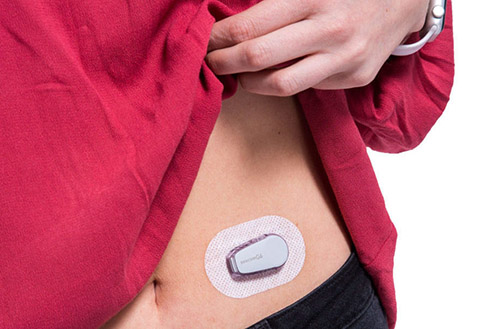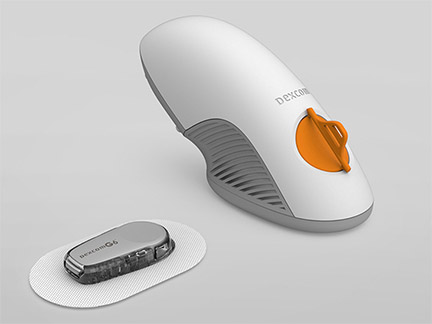-
Other Thoughts >
May 29, 2022
Why I ♥ my Dexcom
I have had type 2 diabetes for nearly my entire adult life - and frankly, for most of that time I have sucked at managing it. Don't get me wrong, I tried to watch what I was eating in order to limit my carb and sugar intake. Every time I got my A1C tested, though, it would show that I just wasn't doing that great a job. It made me frustrated and defensive. I often found myself saying to my doctors "Look, I'm not sitting at home eating cookies and candy all day. I don't know why my A1C isn't lower!"
As I got older, I started developing complications from my diabetes issues - as you do if it's not well managed. I started having vision problems and mobility problems, which in turn was making me depressed as well. Not fun. Around this time, my endocrinologist asked me if I wanted to try a Continuous Glucose Monitor (CGM). These devices were first introduced in 1999, but it's really more recently that they've become more mainstream.
If you don't know what a CGM is, it's a wearable device that automatically tracks your blood sugar. It has a tiny sensor that's inserted into your skin (typically on your belly or the back of your arm), and a transmitter that sends your blood sugar levels to an app on your phone or another device. Here's a picture of an installed sensor on someone's belly:

An installed Dexcom sensor What CGMs do is let diabetics stop having to prick their fingers whenever they want to test their blood sugar levels. I absolutely hated testing my blood sugar, so I was sporadic about doing it. Even when I was being meticulous about it, though, I still just tested to see where my level was at before eating - and that was one of the reasons I thought I was managing my blood sugar levels when I really wasn't. More on that in a minute, but first I also wanted to talk about why I was nervous about getting the CGM, too.
I had two concerns with getting a CGM: 1) would it hurt to install it, and 2) would I need to constantly be "downloading" the data. The way the sensor is installed - at least with my Dexcom - is that every 10 days you use a little handheld device to install the transmitter on your belly. You place it against your belly, press a button, and there's a fairly loud noise that injects a very small sensor needle under your skin. It can be a bit startling, but it really doesn't hurt at all. Here's a picture of the Dexcom installer:

The Dexcom installer As for my second concern, I picked the Dexcom simply because it constantly streams the data to my phone. I do need to keep my phone near me, but I don't have to swipe my phone near the sensor the way some CGMs require you to do. For me, that's a game changer because if I know myself well enough to know that I'd end up forgetting to swipe my phone for long periods of time. The continuous streaming also turned out to be very important for me because it's not unusual for me to have low blood sugar incidents overnight while I'm sleeping.
Which brings me back to why I wasn't doing a great job managing my blood sugars before my Dexcom. When I started using it, what I found was that while my blood sugars were often reasonable right before I would eat, they'd also spike up quite high an hour or two after eating - and stay that way. That's why my A1Cs were higher than I expected them to be. With the Dexcom, I got to figure out which foods I react to strongly, and which ones I react to more moderately - and that was worth it to me right there. I also found out that while, yes, carbs and sugars are important, your body doesn't react to them like they're a formula "eating X carbs = Y blood sugar". For me, at least, it turns out that eating foods with a lot of preservatives in them spikes my blood sugar much higher than foods with the same carbs/sugar levels without preservatives. Having all of this data has meant that I could finally get my blood sugar under control (my last A1C was 5.6).
I know this might sound like a sales pitch for Dexcom, but it isn't, I swear. I have issues with my Dexcom too, like the sensors sometimes fail and you also still have to callibrate the Dexcom by using your old blood sugar meter (so it's not like you get to stop doing that completely. Overall, when I weigh the pros against the cons, I would definitely choose using a CGM again. If you're diabetic, and you're thinking about getting one, I do recommend it. Just also do your research on them, and pick one that would work best for you (including prices since the supplies for these things aren't particularly cheap).
Thanks for reading!
